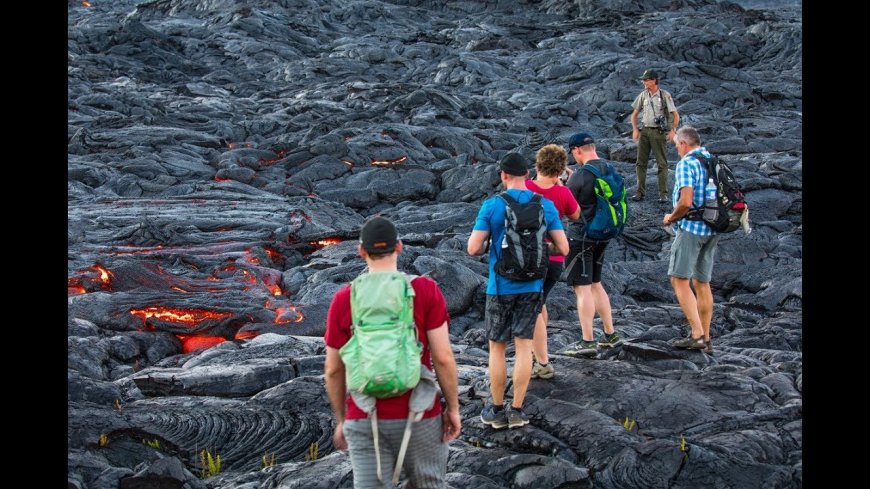Kilauea Awakens: Hawaii’s Volcano Eruption Renews Safety Warnings and Tourist Jitters
Hawaii’s Kilauea Volcano has erupted again, with fresh lava flows raising safety concerns for residents and tourists. Exclusive drone analysis and seismic data reveal what comes next.

HILO, Hawaii — The Big Island’s most restless giant is awake again. Kilauea Volcano, long a source of awe and anxiety for locals and visitors alike, resumed activity this week with fresh lava flows spilling into the Halemaʻumaʻu Crater inside Hawai‘i Volcanoes National Park. The U.S. Geological Survey (USGS) confirmed the renewed eruption after increased seismic tremors hinted at rising magma levels over the weekend.
For Hawaii, the eruption is more than a natural spectacle. It reignites the balancing act between safeguarding public safety, protecting fragile ecosystems, and keeping the state’s lifeline tourism industry steady.
Lava Flows and Drone Footage Reveal Extent of Activity
Exclusive drone footage analyzed by volcanologists shows glowing lava fountains reaching heights of 100 feet, while molten rivers flow into the crater floor. “The current eruption remains confined to the summit, but magma pressure is still building,” said Dr. Kenji Matsuura, a geologist at the University of Hawai‘i at Hilo.
Thermal imaging drones detected cracks forming along the south rim of the crater, which experts say could widen if pressure continues to mount. Matsuura warned, “Any shift in seismic readings may trigger broader surface activity, so it’s critical to keep monitoring in real time.”
The USGS released updated hazard maps showing potential lava flow zones, urging hikers and visitors to stay clear of closed areas.
Seismic Data Offers Glimpse of Future Eruptions
The eruption follows weeks of heightened earthquakes beneath the summit — more than 750 micro-quakes recorded in just seven days. Seismic experts say this pattern often signals that molten rock is migrating closer to the surface.
“Every tremor tells a story of stress underground,” explained Dr. Emily Ruiz, a volcanologist with the USGS Hawaiian Volcano Observatory. “We are seeing seismic clusters similar to the run-up phases of Kilauea’s 2018 eruption.” That event displaced thousands of residents, destroyed more than 700 homes, and caused an estimated $800 million in damages.
With the current eruption smaller in scale, officials emphasize preparedness rather than panic.
Impact on Tourism and Local Economy
The eruption arrives during Hawaii’s busy travel season, when visitors flock to the islands. Hotels near Hilo and Kona reported a wave of cancellations following initial reports of lava activity.
At Volcano House, a historic lodge perched at the rim of Kilauea’s caldera, reservations dropped by 20% in two days. “People see headlines and assume danger, but much of the park remains open,” said lodge manager Leilani Pacheco. “We remind guests that eruptions here are often safe to view — from the right distance.”
Tourism, which contributes nearly $18 billion annually to Hawaii’s economy, is sensitive to natural hazards. The state is now deploying a communications campaign emphasizing visitor safety, drawing comparisons to previous eruptions that coexisted with tourism.
Local Voices: Fear and Resilience
For residents of the Big Island, eruptions bring both disruption and resilience.
“Every time Kilauea stirs, we relive the fear of 2018,” said Puna resident Daniel Lopez, whose home narrowly escaped lava flows seven years ago. “But at the same time, this land has lived with Pele’s fire for centuries. We learn to adapt.”
Hawaiian cultural practitioners stress that eruptions are not simply disasters but sacred events tied to Pele, the goddess of volcanoes. “It is both destruction and renewal,” said kumu hula (hula teacher) Kealoha Kaʻanā. “The land is remade, and we are reminded of our connection to it.”
Safety Measures for Residents and Visitors
Emergency officials outlined new safety measures, including:
-
Restricted access zones around Halemaʻumaʻu Crater.
-
Real-time updates through the USGS Kilauea eruption page.
-
Mobile alerts for Big Island residents in high-risk zones.
-
Increased park ranger presence to guide visitors.
Tourists are advised to stay within designated viewing platforms, where eruptions can be safely observed. Breathing masks are also recommended, as volcanic gases such as sulfur dioxide can pose respiratory risks.
Looking Ahead: What the Data Suggests
Real-time monitoring suggests Kilauea could continue erupting for weeks, though the scale remains uncertain. “The key question is whether the eruption stays contained in the crater or breaks into lower rift zones,” said Ruiz.
A government report released last month indicated a rise in volcanic gas emissions, correlating with magma shifts. This adds weight to projections that Kilauea’s activity could intensify if pressure pathways open beyond the summit.
Conclusion
Kilauea’s latest eruption serves as a reminder of Hawaii’s delicate coexistence with its volcanic landscape. While seismic data warns of potential escalation, careful monitoring and preparedness have given residents and scientists a sharper edge against surprises. For tourists, the eruption is both a challenge and an invitation — to witness one of Earth’s rawest forces, but with caution and respect.
As the lava glows against the night sky, Hawaiians brace themselves once again, not in fear alone, but in resilience and reverence for a volcano that shapes both their land and their lives.











